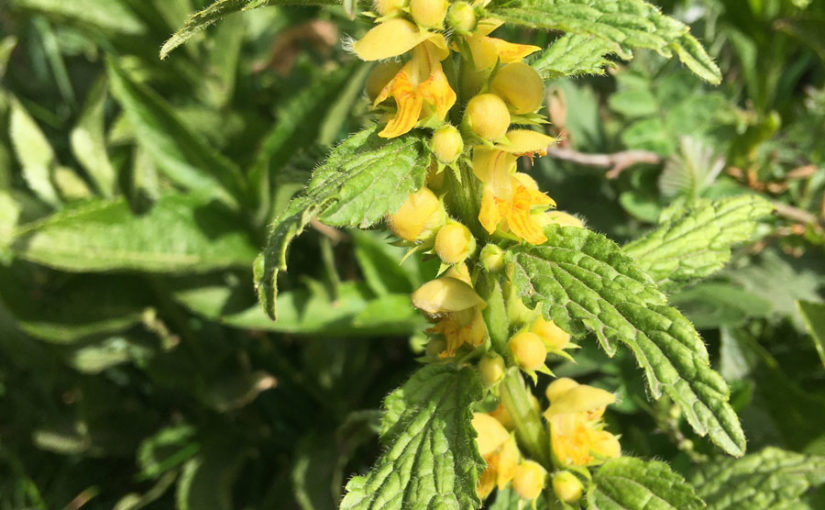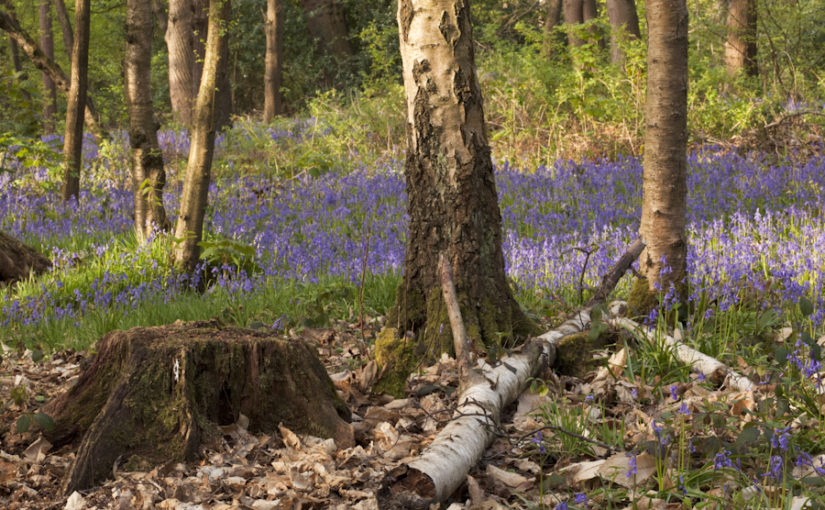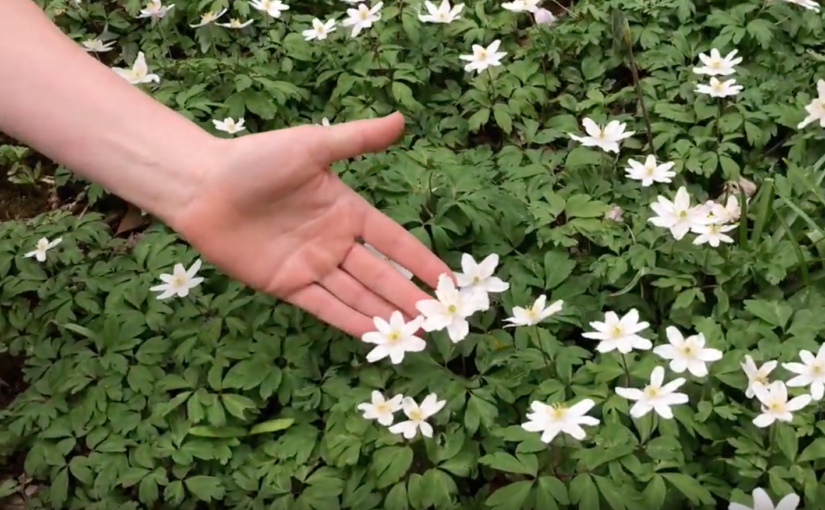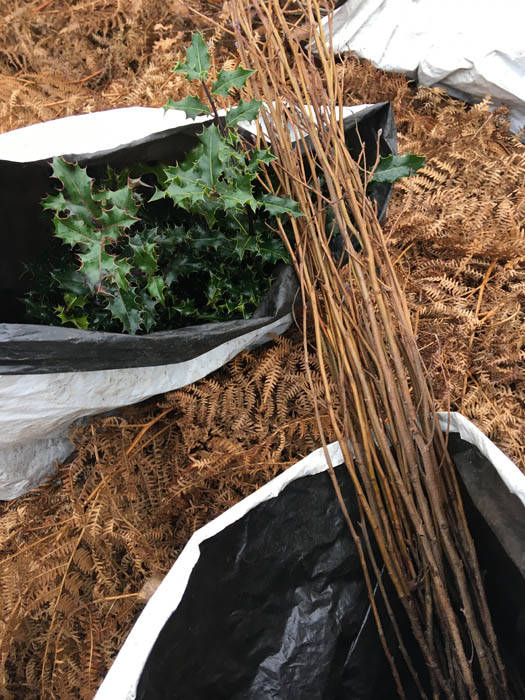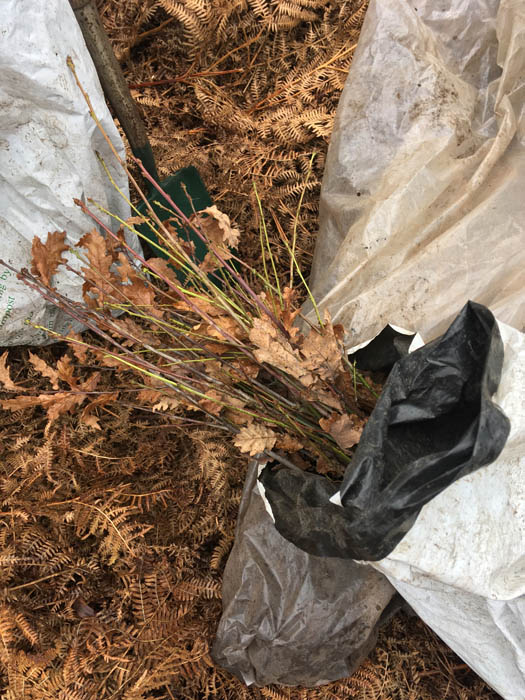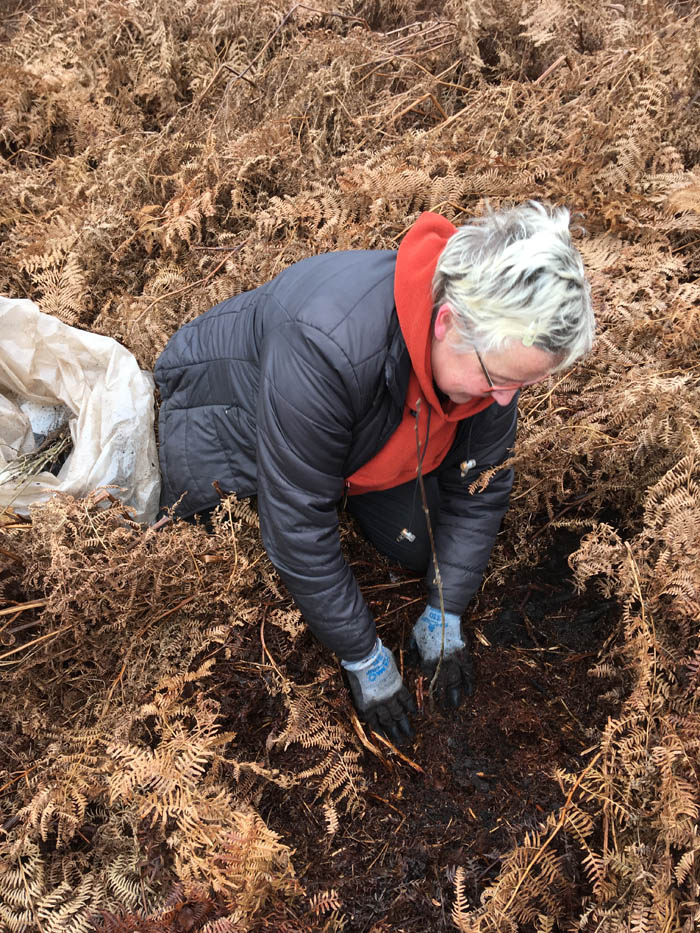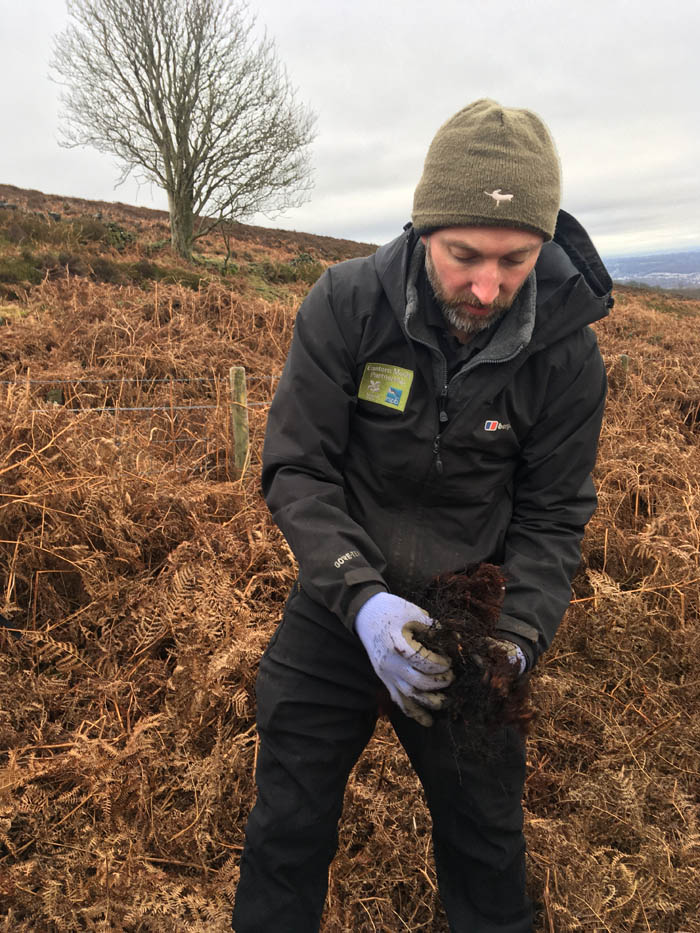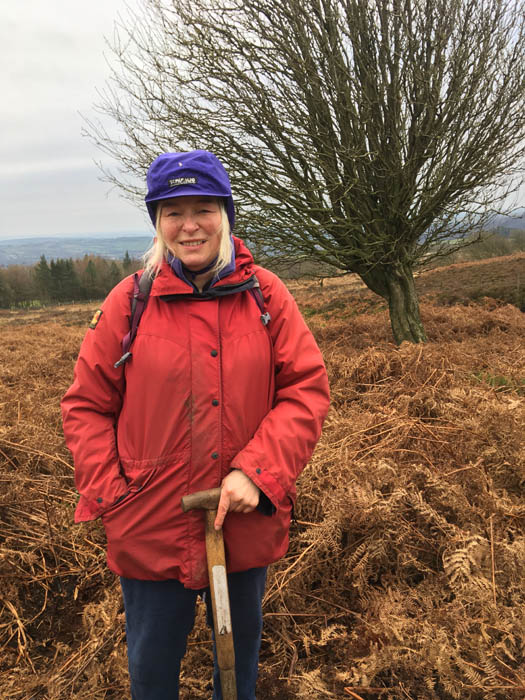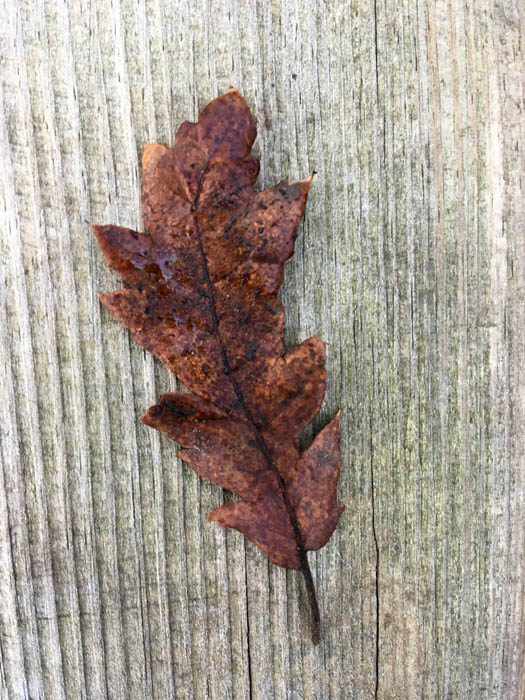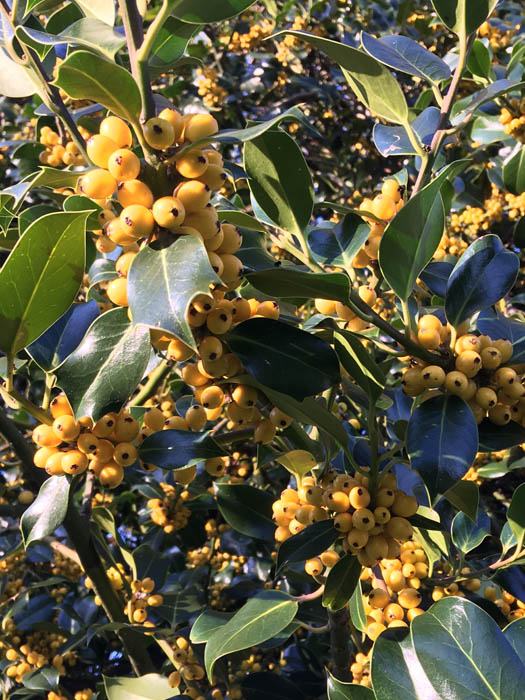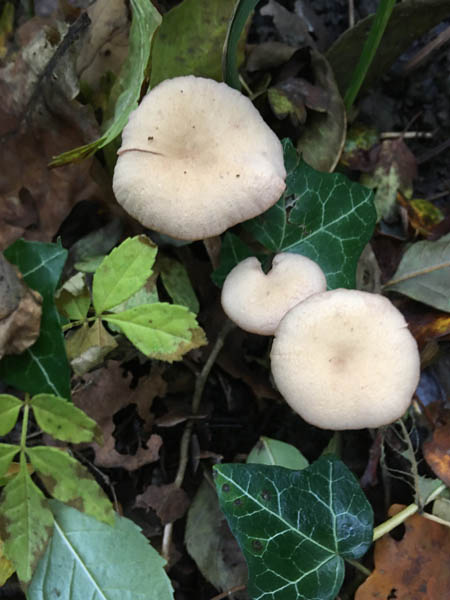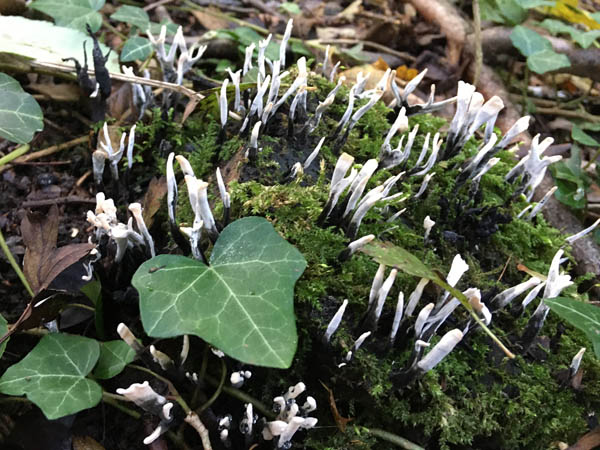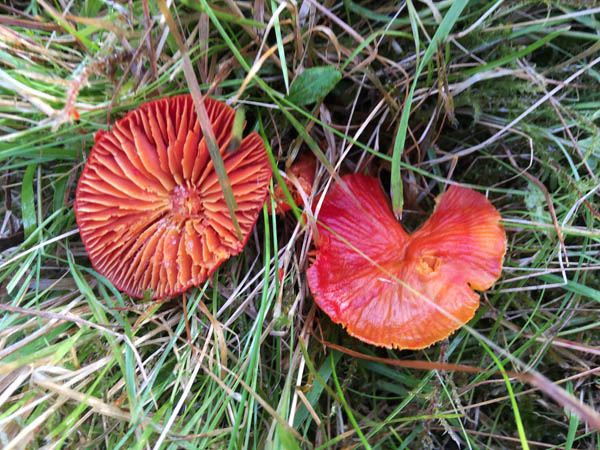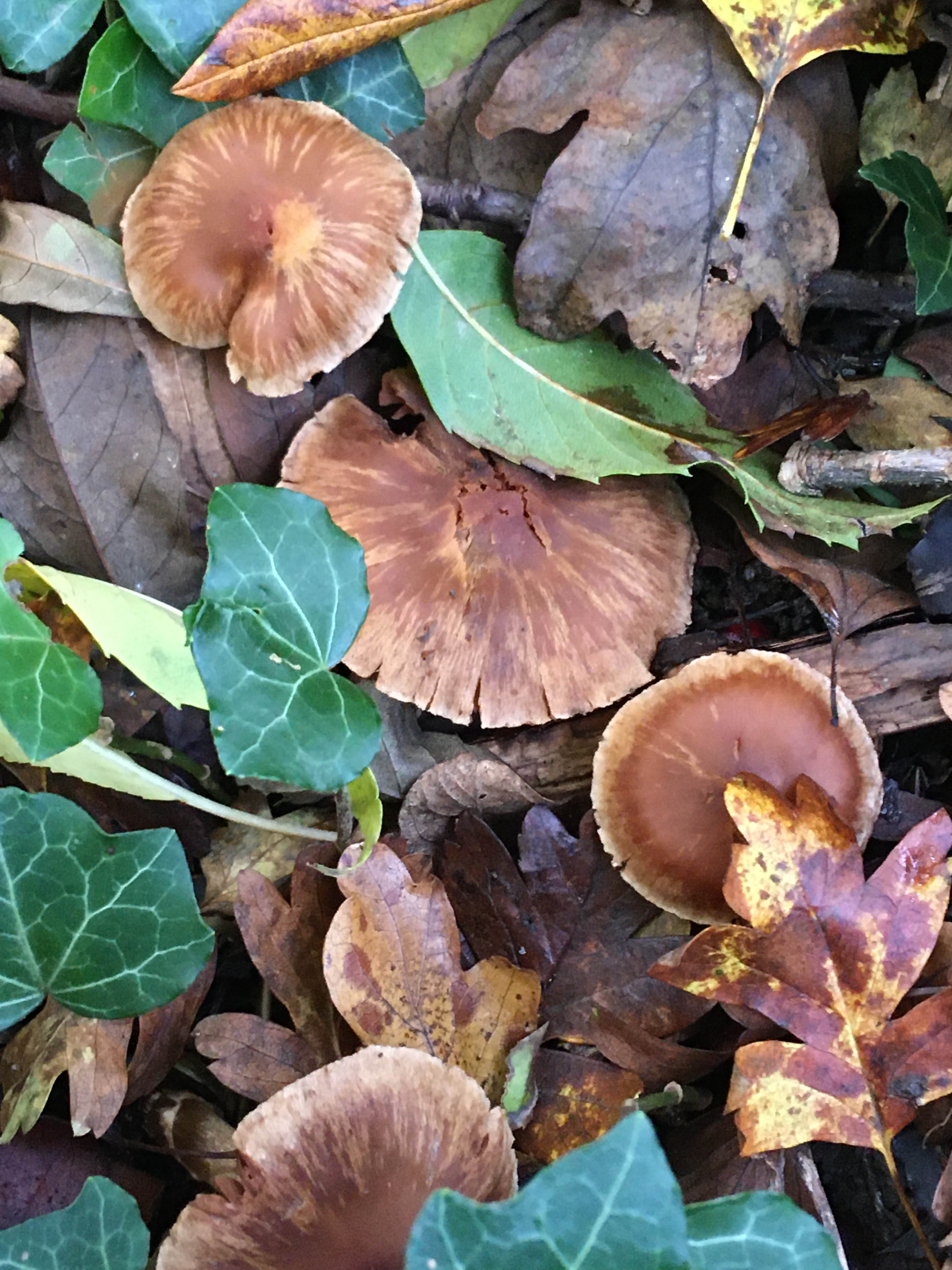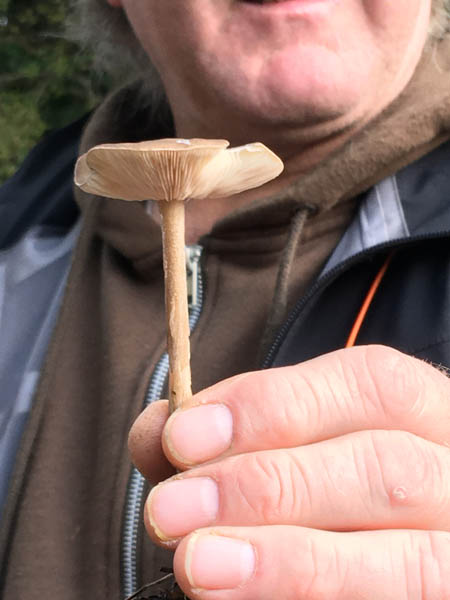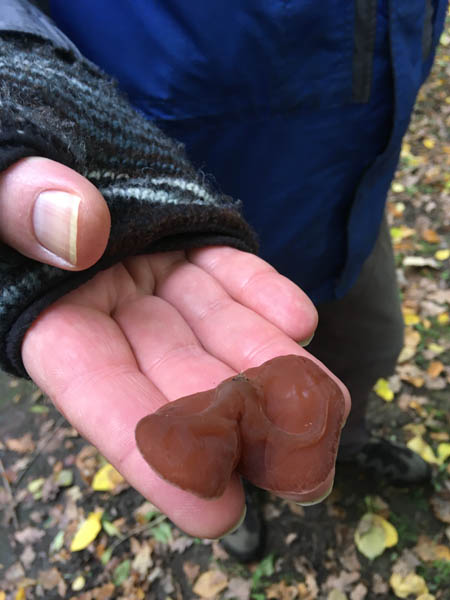A short video among the English bluebells (Hyacinthoides non-scripta) tracing the winding paths in Ecclesall Woods, Sheffield. Enjoy the sights and sounds of South Yorkshire’s largest ancient woodland in all its springtime splendour. With around 50% of the world’s population, Britain is the only place where you can see such large colonies of bluebells and the dazzling display only lasts for a month at most.
Bluebells are a key ancient woodland indicator species and where extensive carpets of them are seen it is safe to assume that you are in woodland dating back at least 400 years. While the bluebells themselves are not this old the bulbs lay dormant in the soil, surviving for decades while they wait for enough light to flower and creep incrementally outwards.
Tag: #sheffieldwoodlandconnections
Newfield Spring Wood: ancient woodland indicator species
On a recent visit to Newfield Spring Wood, a woodland close to my home in the southwest of Sheffield, I spotted a classic ancient woodland indicator species: yellow archangel (Lamium galeobdolon). This foliage of this plant superficially resembles the familiar stinging nettle (Urtica dioica), however it can be easily distinguished when in flower. Stinging nettle has lots of tiny ball-like flowers hanging down in chains, whereas yellow archangel has whorls of bright yellow hooded flowers. The adventurous could also tell them apart by testing the leaves – if it hurts it is a stinging nettle!
On this occasion I saw yellow archangel growing alongside white dead-nettle (Lamium album) – also a non-stinger, which has similar flowers (but in white) and broader leaves. Included below is a photo of them growing together to make identification easier.



Although yellow archangel should be a locally common species associated with the ancient woodlands and hedgerows of Sheffield, what is actually frequently found is Lamium galeobdolon ‘Variegatum’ which, as the name suggests, has a variegated leaf. This is a cultivated species that often escapes from gardens into woodlands.
Woodland Wanders with Sheffield Woodland Connections: Ecclesall Woods 19th April 2020
Join me for another virtual walk around Ecclesall Woods in Sheffield, South Yorkshire. In mid-April most trees have now come into leaf and there are wildflowers in every direction. Learn how to identify: beech (Fagus sylvatica); English bluebell (Hyacinthoides non-scripta); greater stitchwort (Stellaria holostea); hornbeam (Carpinus betulus); sweet chestnut (Castanea sativa) and wood sorrel (Oxalis acetosella).
Woodland Wanders with Sheffield Woodland Connections: Ecclesall Woods 4th April 2020
Join me for a virtual walk around Ecclesall Woods in Sheffield, South Yorkshire. It’s early April; trees and plants are bursting into life. Learn how to identify: blackthorn (Prunus spinosa); garlic mustard (Alliaria petiolata); hazel (Corylus avellana); raspberry (Rubus idaeus); wild garlic (Allium ursinum); wood anemone (Anemone nemorosa) and wych elm (Ulmus glabra).
Planting woodland on Houndkirk Moor
This morning I joined a group of about twenty keen volunteers to plant up a few hundred tree whips on Houndkirk Moor, on Sheffield’s western outskirts. This initiative is led by the Eastern Moors Partnership, which manages the extensive moorlands of northeast Derbyshire and South Yorkshire. They have teamed up with a semi-regular group of volunteers organised by local author and environmental campaigner Sally Goldsmith to create the woodlands of the future.
All that is left of what was once a wooded landscape is a smattering of birch, some veteran rowans, oaks and pockets of willow on damper soil. Bracken has taken hold of this land; wherever there is bracken a woodland once stood – it is a woodland species. Take the shading effects of trees out of the ecosystem and rhizomatous bracken runs amok.
Managing bracken encroachment is a time consuming and sometimes controversial business, or at least it is when chemical controls are used. In quantity bracken is toxic to sheep and cows, meaning that grazing methods used to control other vigorous plants cannot be applied. It would be easy to give up the fight, however restoring woodland might go some way toward taming the bracken.
This may be the landscape we inherited but we can plant a better legacy. Planting the right trees on the right patch of moorland – the areas already blighted by bracken rather than the blanket bogs already effectively storing carbon – is a smart and cost-effective move.
We need locations to plant the vast number of trees required to draw down carbon from the atmosphere to help meet CO2 reduction targets. That is reason enough, however this is also an opportunity to plant native woodland to provide food and cover for birds and other wild animals. Trees planted today will provide seed for the next generation of woodland, which will regenerate naturally to fit its environment more perfectly than even our best attempts at restoring nature.
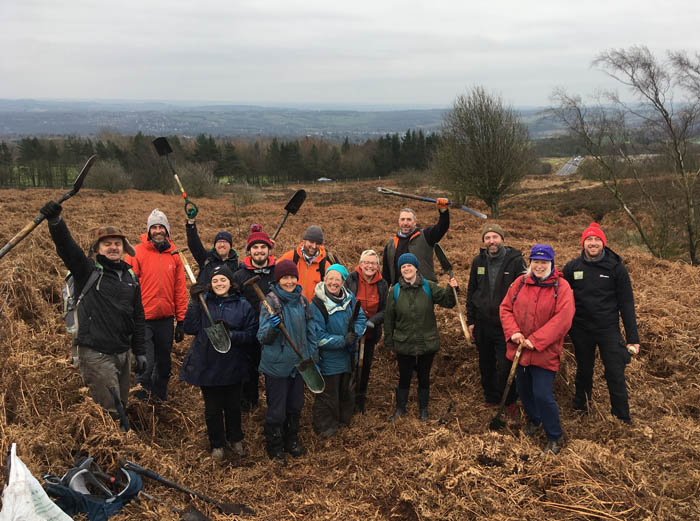
Unsurprisingly, the main challenge this site presents is rampant bracken. Having never planted into it before this was a new experience for me. It involves bashing and trampling before digging can even begin. My progress was slow but at least I was thorough. The soil is good for planting in the sense that it is peat, only it is full of tough bracken rhizomes that take some teasing out. Little soil is left afterwards. We also had to be particularly careful to not damage surviving examples of Sphagnum peat moss; I saw only fragments of it. Another Bryophyte highlight was a couple of common hair moss (Polytrichum commune) patches.
Species we planted:
alder (Alnus glutinosa) – in wet soil
birches, both silver (Betula pendula) and downy (B. pubescens)
hawthorn (Crateagus monogyna)
holly (Ilex aquifolium)
rowan (Sorbus aucuparia)
sessile oak (Quercus petraea)
willow (Salix spp.) – in wet soil
Walks for Festival of the Outdoors
Sheffield’s 2020 Festival of the Outdoors runs from 1st to 31st March. It will be the first time that Sheffield Woodland Connections has participated in the festival, for which I’ll be leading three walks. Each walk is two hours long and we will cover subjects including: identifying trees in winter and recognising veteran and notable trees. For more information click on the links below.

Date: Sunday 1st March 2020.
Time: 11.30am – 1.30pm.
Tickets: from £5 – £7. Book your place here.

Date: Sunday 8th March 2020.
Time: 1 – 3pm.
Tickets: from £5 – £7. Book your place here.

Date: Sunday 22nd March 2020.
Time: 1.30 – 3.30pm.
Tickets: from £5 – £7. Book your place here.
The trees of Meersbrook Park Walled Garden
Yesterday I was fortunate enough to have a tour of the Meersbrook Park Walled Garden, Sheffield, in the company of Kaktus, a volunteer and fellow tree enthusiast. This visit was in preparation for a walk that I will be leading here next year. Along with the park itself, the walled garden makes a wonderful place for a tree walk on account of the species variety, many of which are seldom seen in this part of the world.
Upon entering the walled garden from the park the first highlight is the ghostly Himalayan birch (Betula utilis), the white bark of which is especially stunning when all the leaves have fallen. Immediately to the right is a tunnel formed from flexible white willow (Salix alba) that is identifiable, even without its leaves, by the yellow stems of younger growth. This tree’s common name comes from the white underside of the leaves, just to clear up any possible confusion.
One of the trees caught me out. It was an oak-leaved cultivar of hornbeam (Carpinus betulus ‘Quercifolia’), which I have never encountered before. A few minutes were spent scratching my head: the leaves were saying ‘oak’ but the bark was something else altogether and I will admit to being thrown off the scent. Only when Kaktus confirmed it was a hornbeam did all the bits of the puzzle fall into place. Even when young the bark has the characteristic striated appearance that is best evoked by the North American name ‘musclewood’.
One of the more exotic specimens found here is the foxglove tree (Paulownia tomentosa) and, despite hailing from Central and Western China, it grows surprisingly well in Northern Britain providing it gets enough shelter from the wind. I will be back in May to check out the spectacular lilac-coloured flowers. For now it can be recognised by the unusual, pointed, seed pods, each apparently containing 200 seeds, which contributes to this beautiful tree being regarded as an invasive weed in North America.
There are many trees of note elsewhere in the park, some of which I have mapped already, however it is a huge space and I will have to return to complete the rest in the New Year. On my way back to Meersbrook Park Road I spotted a yellow-berried holly, right next to this entrance, which was truly resplendent in the slanting winter sunlight. The birds tend to favour red berries first and so the yellow berries will likely remain throughout winter.
A Halloween fungi walk
On All Hallow’s Eve what better way to celebrate the cycle of death and renewal than go looking for fungi? They are nature’s great recyclers; many of them are saprophytes that feed on dying plants and animals, making their nutrients available for next generation of life.
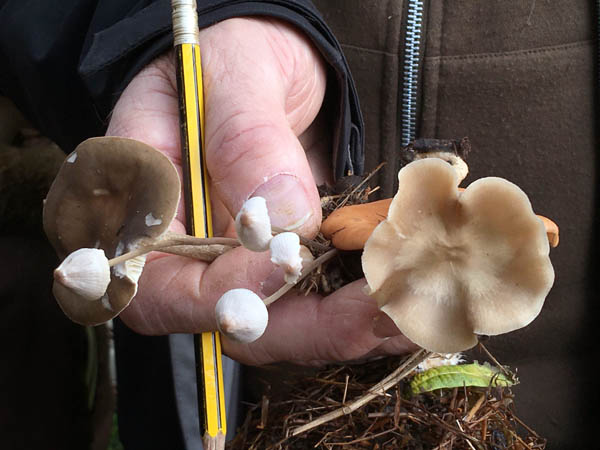
Last week I joined the autumn fungi walk led by by Micheal ‘Ziggy’ Senkans, Biodiversity Officer at Sheffield City Council around the fields and woodland of Waterthorpe Meadow in Beighton. Fungi are their most visible later in the year as herbaceous plants die back and deciduous trees lose their leaves.
As a whole different order of life from plants and trees, it has taken me years to develop an eye for identifying fungi. It is still a work in process but as my confidence grows I have been able to forage a few edible mushrooms this year, which feels like an achievement.
Caution is needed at all times. Start with the assumption that all fungi are poisonous. Especially if they are red, have a wavy collar or ‘skirt’ at the top of the stem or feature an egg sac at the base.
All the fungi featured on this page have been identified by an expert. Please do not use this article as the sole means of identifying any fungi you may find, especially if you intend to eat them. People die each year after mistaking edible mushrooms for deadly ones. Be safe!


